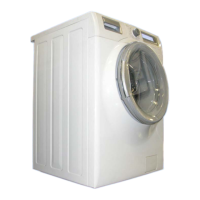
Do you have a question about the Electrolux EWM3500 and is the answer not in the manual?
| Brand | Electrolux |
|---|---|
| Model | EWM3500 |
| Category | Washer |
| Language | English |
Illustrates correct and incorrect methods for moving the appliance during delivery.
Demonstrates safe ways to lay down the appliance during repair work.
Outlines the main features and components of the ENV06 electronic control system.
Describes the control panel layout and components.
Guides the user through the initial setup process, including language and time settings.
Explains how the control panel functions and how programmes are configured.
Details the operation and functionality of the programme selector dial.
Describes the function of each button and the information displayed on the LCD screen.
Explains the function of the OK button for confirming selections.
Details the START/PAUSE button's role in starting and pausing the wash cycle.
Explains the "Time Driven" function for adjusting wash time based on dirt level.
Illustrates the different phases of a washing cycle as shown on the LCD display.
Describes how to check and modify programme settings during a running cycle.
Explains how to pause and resume a washing cycle using the START/PAUSE button.
Details how to stop or cancel a running washing programme.
Describes what happens when a washing cycle finishes and how the appliance signals completion.
Guides on activating and deactivating the child lock function to prevent unintended use.
Explains how to save and recall personalized washing programmes.
Describes the Wash Guide feature for selecting optimal programmes, temperatures, and spins.
Details the Temperature Guide for choosing appropriate washing temperatures for different fabrics.
Explains the Spin Guide for selecting the correct spin speed for various types of laundry.
Describes the Options Guide for understanding available washing options.
Details the Stain Guide for information on removing heavy soil from different fabrics.
Explains how to activate and use the demonstration mode for retail settings.
Introduces the settings menu for customizing appliance parameters.
Guides on how to change the display language settings.
Explains how to adjust the volume level for melodies and beeps.
Details how to set the appliance's clock time.
Guides on adjusting the display's luminosity level.
Explains how to adjust the display's contrast level.
Describes how to reset various settings to factory defaults.
Explains how to set a delayed start time for washing programmes.
Provides step-by-step instructions to enter diagnostic mode for testing.
Explains the procedure for exiting diagnostic mode and returning to normal operation.
Details the various diagnostic phases and the components tested in each selector position.
Explains how alarms are indicated to the user via LED and LCD display.
Guides on how to access and read stored alarm codes from the electronic board.
Describes the flashing sequence of the START/PAUSE button LEDs indicating alarm codes.
Provides specific examples of how different alarm codes are displayed.
Explains how to quickly view the last three alarm codes in normal operation.
Details the procedure for cancelling the last recorded alarm.
Outlines the steps to clear memorized programme settings.
Lists the basic washing programmes with temperature and spin speed details.
Presents a table of available washing options and their compatibility with programmes.
Details specific compatibility rules for options based on drawer type and valve configuration.
Provides detailed explanations for each available washing option.
Describes the memory system (FLASH, RAM, EEPROM) used by the control unit.
Explains the overall architecture of the control system's memory modules.
Details the contents and functions stored in the FLASH memory.
Describes the Random-Access Memory (RAM) and its role in dynamic information storage.
Explains the function and types of door interlocks used in the appliance.
Details the operating principle of the voltmetric door interlock using a PTC element.
Explains the operating principle of the instantaneous door interlock system.
Describes the step-by-step operation of the instantaneous door lock.
Lists the conditions the system checks before allowing the door to open.
Explains how the door automatically unlocks under specific fault or power-off conditions.
Describes the water filling system and the role of electric valves and pressure switches.
Details the analogue pressure switch used for water level detection.
Explains the operation of the drain pump and its power supply.
Describes the function of the recirculation pump if equipped.
Details the heating element, thermal fuses, and relay control.
Explains the NTC temperature sensor and its resistance values.
Describes the three-phase motor, its connections, and winding resistance checks.
Explains how power is supplied to the motor via the inverter.
Details the anti-foam control procedure and its detection methods.
Explains the Fast Unbalance Control System for load balancing during spin cycles.
Lists all alarm codes, their possible faults, and machine status.
Lists the electrical components and their corresponding labels in the motor diagram.
Guides on how to access the electronic control system.
Details how to remove the work top to access internal components.
Provides steps for removing the control panel.
Explains how to access and replace the door interlock mechanism.
Details the procedure for accessing and cleaning or replacing the drain filter.
Guides on how to access and extract the inverter board.

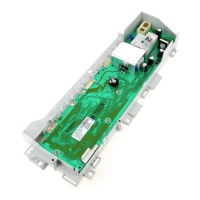
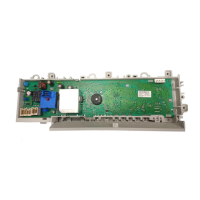
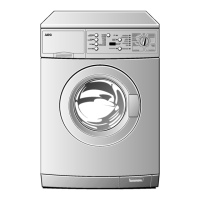
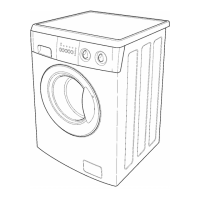


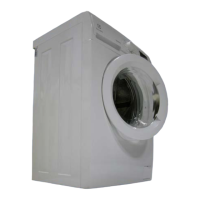
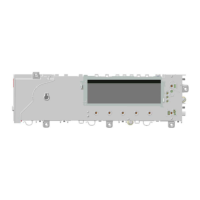
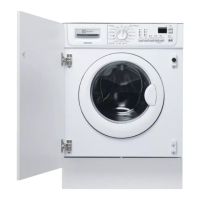


